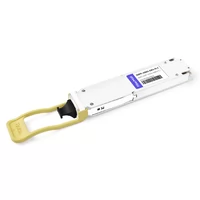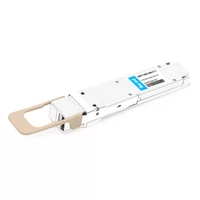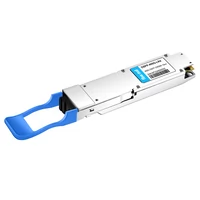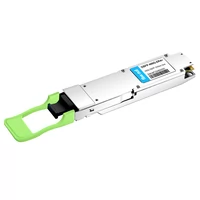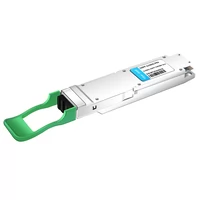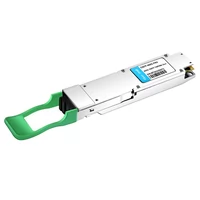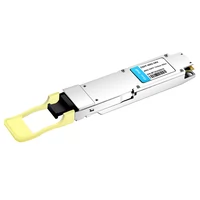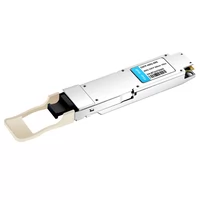OSFP (Octal Small Form-factor Pluggable) modules are becoming increasingly important in achieving high-speed optical connectivity in the fast-growing world of data communications. These devices were developed to address the need for higher bandwidth and efficiency in contemporary networking environments, facilitating seamless data transmission through fiber optics. This document will discuss OSFP module specifications, benefits and applications so that readers can understand how they contribute to improving network performance. To handle more significant amounts of data and enhance their infrastructure, organizations should consider using OSFP technology, which provides unmatched speed and reliability for end-to-end connections.
Table of Contents
ToggleWhat is an OSFP Module?
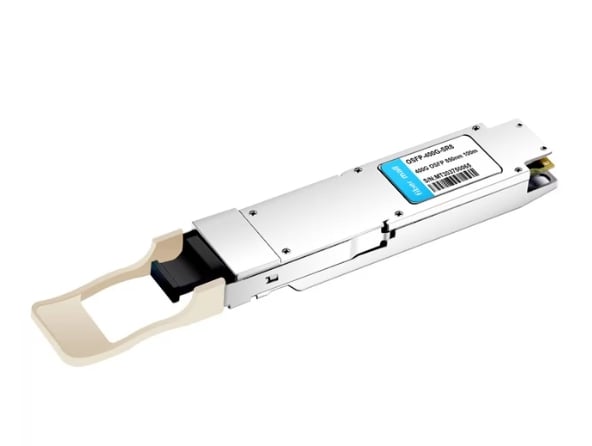
OSFP Overview: Key Features and Form Factor
Due to the octal design of OSFP modules, they have eight individual optical lanes in one module. This means that the bandwidth is higher than what traditional types can handle. Normally, each OSFP module can accommodate data speeds between 200 Gbps and 400 Gbps, which makes it ideal for use in high-density environments or applications that require a lot of data processing power. The dimensions of an OSFP form factor are large enough (70mm x 18mm) to be used efficiently within networking equipment but still easy to install and maintain. Additionally, these modules allow hot swapping, so there’s no need for downtime when upgrading network hardware quickly or easily. With all these features combined together, it is clear why OSFP modules make up such a flexible solution for today’s challenges with optical connectivity systems.
Comparing OSFP with QSFP-DD and Other Standards
It is critical for networking professionals to understand the key differences and similarities between OSFP and QSFP-DD. Quad Small Form-factor Pluggable Double Density (QSFP-DD) modules have a similar form factor, which supports high data rates, but they can be configured in pairs to achieve 400 Gbps by combining eight lanes. The OSFP design, on the other hand, improves thermal management and increases port density in network devices even though both OSFP and QSFP-DD cater to high bandwidth demands.
On the other hand, SFP (Small Form-factor Pluggable) and CFP (C Form-factor Pluggable) are used for lower data rates with larger sizes. For instance, SFP tops out at about 10 Gbps, making it incompatible with current-day fast networks. CFP has better performance but consumes more space, hence less density of ports. Therefore, the choice between qsfp-dd or osfp will depend on particular network specifications, room available, among others. Thus, its importance cannot be overemphasized as we move into an era of constantly changing networks.
Understanding OSFP MSA and Its Importance
The OSFP Multi-Source Agreement (MSA) is a collaborative standardization initiative that defines specifications for OSFP modules and ensures interoperability among manufacturers. It establishes an essential compatibility level that makes it easier to integrate different networking components, therefore minimizing the deployment complexity and cost for network operators. The OSFP MSA focuses on high-density applications while providing support across various data rates, which makes it important in enabling advanced data center architectures. In addition, this MSA promotes industry innovation because it allows vendors to create new technologies within a common technical framework, hence propelling optical networking solutions forward.
How Does PAM4 Technology Enhance OSFP Performance?
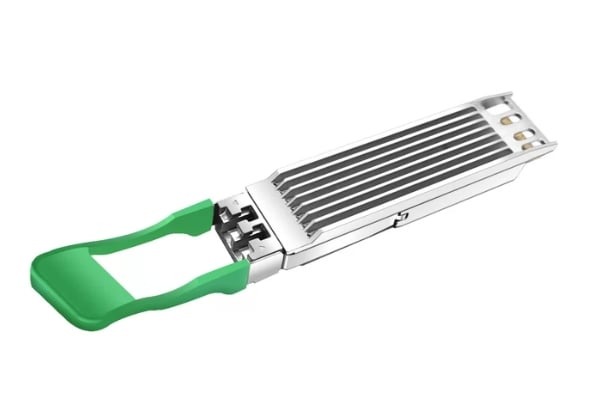
Decoding PAM4: Basics and Benefits
Pulse Amplitude Modulation 4 (PAM4) is a complex signaling scheme that sends two bits of information per symbol instead of the single bit used in Non-Return-to-Zero (NRZ) signaling. PAM4 uses four different amplitude levels to double data rates over the same bandwidth. This is especially useful for high-speed optical communication systems that need more capacity without more frequency bands.
The main benefits of PAM4 technology are more efficient data transmission, lower power consumption, and better performance over long distances. Furthermore, it helps build a scalable framework able to handle rapidly increasing traffic volumes in data centers or telecom networks. Thus, it has become an essential part of modern optical transceiver designs that facilitate shifts toward higher bandwidth applications while still being compatible with current infrastructure.
The Role of PAM4 1310nm Wavelength in Transmission
Optical communications systems utilize the 1310nm wavelength, especially in data transmission via PAM4 technology. This wavelength is preferred because of its compromise between signal loss and distance, making it suitable for short to medium ranges such as in metropolitan area networks and data centers. The use of this PAM4 at 1310nm increases bandwidth capabilities, effectively doubling the existing fiber optic infrastructures without requiring extra wavelengths.
Furthermore, when combined with high-performance optical transceivers, PAM4 at 1310nm can greatly lower bit cost per unit since this spectrum allows long-distance transmission with little dispersion. Not only does this increase network capacity, but it also creates a path towards future-proofing networks due to ever-increasing data demand. Thus, next-generation optical transmission systems are highly powered by integrating both the PAM4 technology and the 1310 nm wavelength, which optimize operations while continuously meeting higher throughput requirements.
PAM4 Implementation in 800G and 400G OSFP Modules
In developing both 800G and 400G OSFP (Octal Small Form-factor Pluggable) modules, PAM4 technology plays an essential role. This technology provides higher data transfer rates while ensuring bandwidth is used efficiently. PAM4 modulation in the OSFP modules can reach a data transmission speed of 400G by encoding two bits of data per symbol. Compared to previous generations of optical modules, this effectively doubles throughput. This is vital as space within a data center becomes more valuable and must support growing workloads at greater densities.
For 800G applications, higher-bandwidth links can be added on top of each other through PAM4 in OSFP modules. To make large-scale data transport systems work better, these technologies need to be able to stack like building blocks. They do not take up much space or power because they have a dual-lane structure, which means many high-density interconnections can be implemented without needing more energy-hungry chips next door, too! Another great thing about them is that they’re very easy for network operators who want faster speeds but don’t want their entire infrastructure replaced overnight – just plug ’em right in alongside whatever you already have! So, we should consider this as essential enabling tech when thinking about future-proofing our optical comms systems.
Why are Data Centers Adopting OSFP Modules?
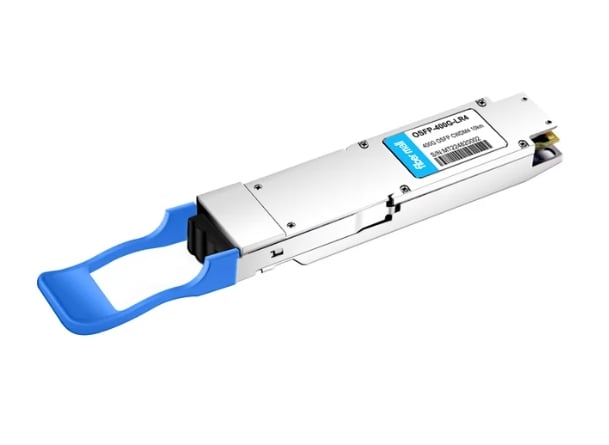
OSFP Advantages for Data Center Interconnect
Several advantages that facilitate enhanced performance and efficiency drive the adoption of OSFP modules in data center interconnects. First, OSFP modules support high-density configurations, accommodating more ports in a smaller footprint. As data centers strive to maximize space while meeting escalating bandwidth demands, this design becomes crucial. With PAM4 modulation ability of up to 800G speeds ensures that data centers can manage increased data flow with higher throughput levels. Furthermore, power-saving features provided by OSFP systems lower operational costs, which are critical for large-scale DC operations. Finally, compatibility with current technologies, as well as backward compliance, minimizes complexities involved during upgrades, hence allowing a smooth transition towards higher capacity solutions without having to redesign extensively.
High Data Rate Applications in Modern Data Centers
Modern data centers are increasingly concerned with high data rate applications to meet the needs of cloud computing, big data analytics, and real-time processing. Examples include high-performance computing (HPC), which requires large bandwidth for interconnecting servers and storage; video streaming services, which need fast content delivery; and machine learning tasks, which produce massive amounts of data, thus demanding efficient data flow. Moreover, 5G technology advancements and edge computing create an even greater demand for higher speeds to facilitate quicker response times and lower latency for connected devices. As such, rising volumes of information necessitate using state-of-the-art interconnect technologies like OSFP modules or PAM4 modulation to support these high-speed applications while ensuring operational efficiency within data center environments.
Ensuring Compatibility: Generic Compatible OSFP Solutions
The goal of generic OSFP solutions is to ensure they can work with any network equipment and technology. This is done by following industry standards, which include IEEE and OFC guidelines for optical and electrical interconnects. Therefore, the best manufacturers will provide OSFP transceivers compatible with different platforms.
Digital diagnostics monitoring (DDM) is one feature offered by many generic OSFP solutions. It helps with real-time performance analysis and troubleshooting. Operators can use this capability to check on the status of their transceivers so that they can optimize their network setup accordingly. More so, some vendors offer custom interfaces and firmware options for increased flexibility in data centers. This ensures deployment requirements are met.
Investing in generic compatible OSFP solutions significantly lowers cost ownership because these products have lower price points than proprietary ones, enhancing flexibility. Such a strategic approach allows data centers to be operationally efficient without being bound by vendor lock-in, thus fostering innovation in high-bandwidth applications.
What are the Key Optical Components of an OSFP Module?
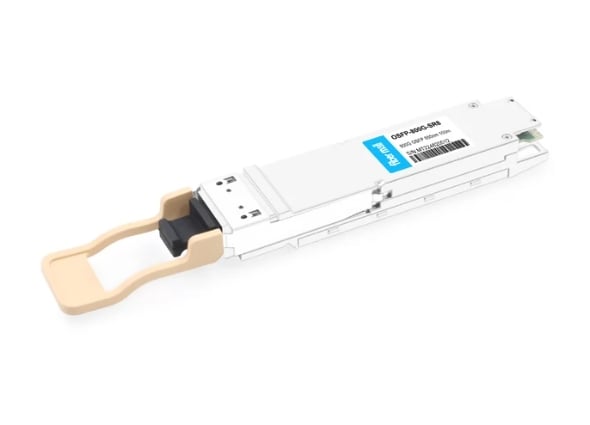
Exploring the Optical Transceiver
The OSFP (Octal Small Form-factor Pluggable) module has an important part called the optical transceiver, which connects the electrical and optical domains. This device’s main job is to take in electrical signals from a network switch, turn them into light signals that can be sent over fiber optic cables, and then do it all again in reverse. A laser diode for sending signals, a photodetector for receiving them, and other optical components are among its most critical parts.
Typically found within an OSFP optical transceiver are technologies like wavelength division multiplexing (WDM), which allows data transmission rates to increase by using multiple wavelengths on one fiber. To improve signal integrity while reducing dispersion effects over long distances, this architecture also includes digital signal processing (DSP). Such sophisticated designs play essential roles in meeting modern data centers’ high bandwidth demands and those of networking infrastructures at large — guaranteeing top performance and reliability throughout their lifetimes!
The Importance of Duplex LC Connectors
Duplex LC connectors are crucial for the performance of optical networks, particularly in OSFP modules. These connectors allow for compact bidirectional data transmission in high-density data center applications. The design of the LC connector features a latch mechanism that reduces the chances of accidental disconnections while providing reliable and secure connections. Additionally, duplex LC connectors have low insertion loss and return loss, which significantly improves signal integrity, thus enhancing overall network performance.
For synchronous transmission and data reception, duplex LC connectors use dual fiber architecture, which is necessary for high-speed networks with seamless communication. As optical networks evolve, it is important to adopt duplex LC connectors to optimize bandwidth utilization and ensure compatibility with different transceivers. Their incorporation into networking infrastructures increases efficiency and scalability to meet growing demands in data transmission applications.
Role of SMF and MMF in OSFP Modules
Optical fibers used in OSFP (Octal Small Form-factor Pluggable) modules are mainly single-mode fiber (SMF) and multi-mode fiber (MMF), each with different functions within a network. Due to its small core diameter, SMF can transmit signals over long distances with shallow signal loss. It is suitable for high-speed and long-range applications such as metropolitan area networks or long-haul communication. Additionally, the ability of SMF to support higher bandwidths makes it applicable in data center interconnects where there is a need for high data rates.
On the other hand, MMF has a larger core diameter, which allows multiple light modes to propagate through it, thus allowing transmission over shorter distances. Therefore, MMF is more appropriate for use within data centers and local area networks that require high-density connections. Even though compared to SMF, MMF has limited distance capabilities; however, it provides an affordable option for short-range connections. The introduction of both single-mode fibers and multi-mode fibers into OSFP modules guarantees meeting diverse networking needs, thereby providing design flexibility while accommodating modern network infrastructures’ changing demands on data transmission capacity.
How is Quality Testing Conducted on OSFP Modules?
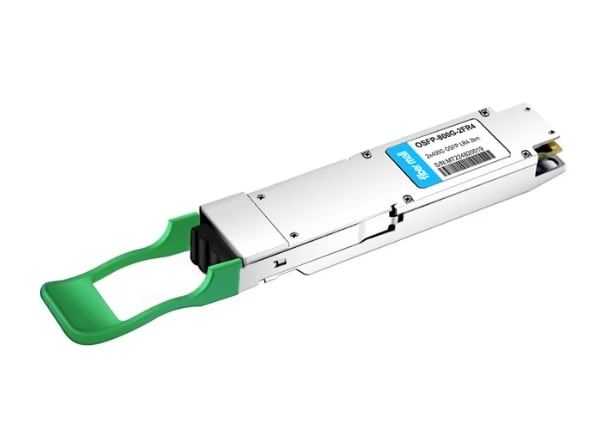
Ensuring Interconnect Reliability through Rigorous Testing
Testing the quality of OSFP modules means performing a series of tests to verify optical interconnects’ reliability and performance. It typically involves evaluating optical performance where factors like insertion loss, return loss, and crosstalk are tested to determine how well signals are transmitted. Moreover, environmental testing mimics different working conditions, such as temperature changes and humidity levels, so that modules can endure real-world deployments. Electrical tests check compatibility with current systems while compliance with industry standards by the Telecommunications Industry Association (TIA) and Institute of Electrical and Electronics Engineers (IEEE), among others, is key. These stringent procedures confirm that OSFP modules work efficiently in modern data networks, enabling smooth data transmission and improving overall network performance.
Quality Testing Standards and Compliance Measures
Quality testing standards for OSFP modules are predominantly governed by several key industry bodies and their established specifications. The Telecommunications Industry Association (TIA) sets forth guidelines such as TIA-568 and TIA-942, which outline the performance requirements for structured cabling systems, including optical transceivers. The Institute of Electrical and Electronics Engineers (IEEE) also plays a pivotal role, mainly through standards like IEEE 802.3, which includes specifications for optical interfaces and performance benchmarks critical for ensuring interoperability within Ethernet networks.
Moreover, compliance with ISO/IEC standards, specifically ISO/IEC 11801, ensures that OSFP modules meet global benchmarks for generic cabling systems. These standards address testing methodologies, installation practices, and performance criteria, providing a framework for achieving consistent quality across various networking environments. By adhering to these rigorous standards and compliance measures, manufacturers can ensure that OSFP modules not only meet but exceed the performance demands required by modern data infrastructures, thus facilitating high reliability and efficiency in data transmission.
Understand the differences in heat sink design for better device connectivity
Exploring the differences in heat sink design between finned-top OSFP and flat-top OSFP shells for better data transmission.
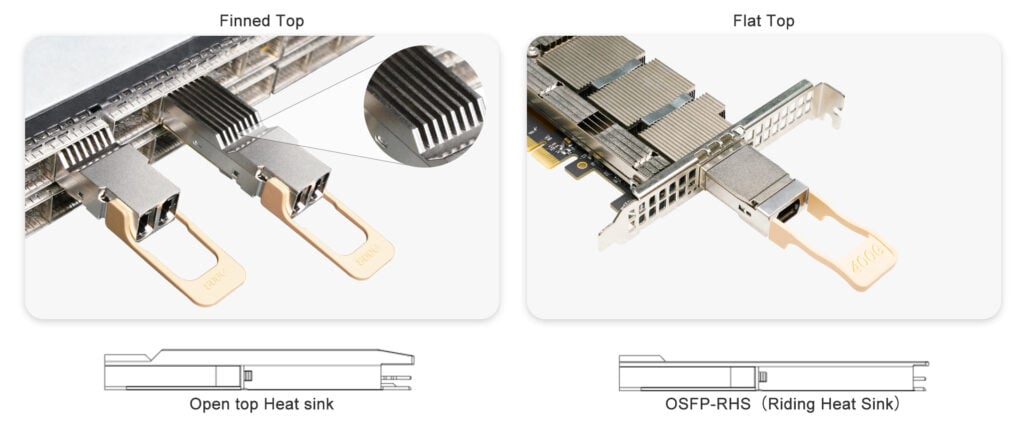
- Finned-top OSFP transceivers are only for the Quantum-2 and Spectrum-4 switches as the switches require finned-top OSFP shells for extra transceiver cooling.
- The OSFP shell features a flat-top design and uses a riding heat sink (cooling fins) on the ConnectX-7 connector cage. 400G OSFP modules are used in ConnectX-7/OSFP adapters.
Best Practices for OSFP Module Pluggable Test and Validation
Best practices for validating OSFP modules should be followed to ensure reliability and performance consistency. Here are some key recommendations based on industry standards and expert insights:
- Automated Testing Equipment (ATE) Should Be Used: Automated testing systems should be used to test the electrical, optical, and thermal performance of OSFP modules. This guarantees accurate and repeatable tests for multiple units.
- Comprehensive Compliance Testing Should Be Conducted: The OSFP modules must regularly be tested against applicable standards like TIA-568 or IEEE 802.3. This should involve checking data integrity, signal integrity, and thermal thresholds under varying operating conditions.
- Environmental Testing Must Be Implemented: Test how the OSFP modules work in different environmental conditions, such as temperature changes or humidity levels, to determine their durability in diverse deployment scenarios.
- Monitor Lifespan And Reliability: Assess long-term performance through stress testing and longevity evaluation; they mustn’t degrade over time if used within a production environment where failure rates must be minimized.
- Provide Clear Documentation: Ensure you keep detailed records of all tests carried out, including procedures followed while ensuring compliance is met at every stage so that quality assurance can occur. This will also ensure transparency among the parties involved by giving them access to crucial information about module functionality.
These best practices enable manufacturers to improve their testing processes, which ultimately leads to better validation of the OSFP modules. Thus, they meet the requirements set forth by modern data networks, increasing overall network efficiency.
Reference Sources
Frequently Asked Questions (FAQs)
Q: What is an OSFP module?
A: OSFP (Octal Small Form-factor Pluggable) modules are optical modules meant to carry data at very high speeds, especially in Ethernet and data center settings. They employ OSFP PAM4 technology, which supports rates of up to 400Gbps.
Q: How does this technology boost data transmission?
A: Pulse amplitude modulation (PAM4) enhances the amount of information sent over a fiber optic cable by making every optical channel more efficient and allowing it to transmit more bits per second without needing additional bandwidth. This is crucial for supporting 400G Ethernet applications.
Q: What advantages do DACs or AOCs offer when used with OSFP Modules?
A: Direct-attach Cables (DACs) provide fast, reliable connections in short-distance, inexpensive ways, while Active Optical Cables (AOCs) give you longer distances but require their own power supply due to having active components inside them.
Q: Are there long-distance options available for use with an OSPF module?
A: The Cisco-OSFP-400G-LR4 compatible 400GBASE-LR4 OSPF modules can be used as SMF transceivers operating at wavelengths around 1310nm, providing support for transmissions ranging between 2 and 10 km.
Q: How does an OSFP pluggable module differ from other types of optics?
A: Like QSFP28, the OS FP pluggable module is explicitly built for high-density and speed applications. The difference lies in its ability to handle more than twice as much data because it uses a different electrical interface designed expressly for PAM signaling.
Q: Which applications can use OSFP modules?
A: Data centers, cloud computing, enterprise networks, and high-performance computing are some of the applications that stand to gain from using OSFP modules because they provide solutions for optical interconnects that have high speed and density.
Q: Are there options compatible with Cisco OSFP-400G-LR4 modules?
A: There are 400GBASE-LR4 OSFP PAM4 transceiver modules designed to work with Cisco equipment. These modules are interoperable and can support similar data rates and distance specifications.
Q: What is the function of a fiber patch in an optical interconnect environment?
A: Fiber patches connect transceiver modules with network systems, ensuring reliable data transmission between them. In addition, they form part of optical interconnect setups, which increases flexibility in cabling infrastructure management.
Q: How does an OSFP PAM4 optical transceiver module differ from other types of traditional ones?
A: An OSFP PAM4 optical transceiver module employs more sophisticated modulation techniques, double-upping its channel’s capacity for transmitting information, making it better suited for fast-paced usage, such as 400 G Ethernet, than conventional types.
Q: What should I look for when selecting an optical interconnect solution?
A: When selecting your ideal optic link, consider factors like required data rate or bandwidth, operating distances involved, compatibility issues with what you already have installed, and future scalability options, among others. For instance, you might want to opt for something like osfp pam Four if you need very fast internet over long distances since it was built specifically to support large-scale growing networks.
Related Products:
-
 OSFP-400G-DR4-FLT 400G OSFP DR4 Flat Top PAM4 1310nm MTP/MPO-12 500m SMF FEC Optical Transceiver Module
$700.00
OSFP-400G-DR4-FLT 400G OSFP DR4 Flat Top PAM4 1310nm MTP/MPO-12 500m SMF FEC Optical Transceiver Module
$700.00
-
 OSFP-400G-SR4-FLT 400G OSFP SR4 Flat Top PAM4 850nm 30m on OM3/50m on OM4 MTP/MPO-12 Multimode FEC Optical Transceiver Module
$550.00
OSFP-400G-SR4-FLT 400G OSFP SR4 Flat Top PAM4 850nm 30m on OM3/50m on OM4 MTP/MPO-12 Multimode FEC Optical Transceiver Module
$550.00
-
 OSFP-400G-LR4 400G LR4 OSFP PAM4 CWDM4 LC 10km SMF Optical Transceiver Module
$1199.00
OSFP-400G-LR4 400G LR4 OSFP PAM4 CWDM4 LC 10km SMF Optical Transceiver Module
$1199.00
-
 OSFP-400G-DR4+ 400G OSFP DR4+ 1310nm MPO-12 2km SMF Optical Transceiver Module
$850.00
OSFP-400G-DR4+ 400G OSFP DR4+ 1310nm MPO-12 2km SMF Optical Transceiver Module
$850.00
-
 OSFP-2x200G-FR4 2x 200G OSFP FR4 PAM4 2x CWDM4 CS 2km SMF FEC Optical Transceiver Module
$1500.00
OSFP-2x200G-FR4 2x 200G OSFP FR4 PAM4 2x CWDM4 CS 2km SMF FEC Optical Transceiver Module
$1500.00
-
 OSFP-400G-FR4 400G FR4 OSFP PAM4 CWDM4 2km LC SMF FEC Optical Transceiver Module
$900.00
OSFP-400G-FR4 400G FR4 OSFP PAM4 CWDM4 2km LC SMF FEC Optical Transceiver Module
$900.00
-
 OSFP-400G-DR4 400G OSFP DR4 PAM4 1310nm MTP/MPO-12 500m SMF FEC Optical Transceiver Module
$800.00
OSFP-400G-DR4 400G OSFP DR4 PAM4 1310nm MTP/MPO-12 500m SMF FEC Optical Transceiver Module
$800.00
-
 OSFP-400G-SR8 400G SR8 OSFP PAM4 850nm MTP/MPO-16 100m OM3 MMF FEC Optical Transceiver Module
$225.00
OSFP-400G-SR8 400G SR8 OSFP PAM4 850nm MTP/MPO-16 100m OM3 MMF FEC Optical Transceiver Module
$225.00

